

Visit to Norfolk by Her Majesty Queen Elizabeth II
1977 , norwich (norfolk).
Cat no. 484
There’s no web video for this work.
Please do get in contact to discuss other ways you could view this work.
- Organisations
Queen Elizabeth II and Prince Phillip visit Norwich.
The first shots are of the preparations for the Royal visit. At Norwich Airport they prepare for the arrival of the Royal couple. The security arrangements are alluded to and cheering crowds are shown at the gate. At the Hewett School preparations are under way for a dance display that will involve 3,000 children from 83 schools. At County Hall, the band of the 1st Battalion The Royal Anglian Regiment marches up the steps and waits. At Norwich Airport, HRH Prince Philip arrives first, having travelled from Yorkshire. He is greeted by the welcoming party before the Queen's plane taxis in. She is greeted by Sir Edmund Bacon, the Lord Lieutenant of Norfolk. The welcoming party is presented by the Lord Mayor of Norwich. The Royal couple leave by car. At the Hewitt School they meet the Chairman of Norfolk County Council Education Committee and the Chief Education Officer. A five year old boy from Cavell First and Middle School presents the Queen with a bouquet. The party are seated on a dais and watch the musical display. The Queen and Duke are driven by open topped range rover around the running track and children cheer.Back in their official car, the Royal couple drive to County Hall. The Queen is greeted by the Chairman of Norfolk County Council and receives the salute and inspects a guard of honour. She meets representatives of local voluntary organisations and inside County Hall talks to Rosetta and Alice, ninety-two year old twins. The Queen signs the visitors' book before leaving. She receives a gift of a lead crystal ship's decanter to mark her visit and leaves amidst cheering crowds.
Featured Buildings
County Hall, Norwich; The Hewett School
Featured Events
The visit of HM Queen Elizabeth II and HRH The Duke of Edinburgh to Norwich July 11th, 1977.
Crowds; Royalty
Maker : Norfolk County Council Education Department
Sponsor : Norfolk County Council
Norfolk County Council
The Visit To Norwich By Her Majesty Queen Elizabeth II.
Manifestations
- Mi dimension conversion std unit : fps
- Mi dimension conversion std add : 0.0
- Mi dimension conversion std mul : 1.0
- Mi dimension field val : Viewing Frame Rate
- Mi dimension field th i : THES1605
- Mi dimension field th h : =CX.J.8
- Mi dimension value : 24
- Mi dimension measurement unit data : fps
- Mi dimension measurement unit id : UNITFPS
- Mi dimension field val : Source Viewing Frame Rate
- Mi dimension field th i : THES1608
- Mi dimension field th h : =CX.J.5
- Mi dimension field val : native / playback
- Mi dimension field th i : THES1616
- Mi dimension field th h : =CX.X.1.1
- Mi dimension value : 25
- Mi dimension value precision val : Uncorrected
- Mi dimension value precision th i : THES1624
- Mi dimension value precision th h : =MP.X
- Mi dimension field val : transfer
- Mi dimension field th i : THES1614
- Mi dimension field th h : =CX.X.1.3
- Mi dimension field val : original
- Mi dimension field th i : THES1615
- Mi dimension field th h : =CX.X.1.4
- Mi format duration value : 0:10:37
- Mi format duration precision val : Exact
- Mi format duration precision th i : THES1630
- Mi format duration precision th h : =KX.P
- Mi format duration type val : Running time
- Mi format duration type th i : THES1632
- Mi format duration type th h : =ZS.Z:
- Aspect parts assoc idref : WHOLE
- Mus part obj num display : 149216
- Mus part obj num number : 149216
- Barcode : INV396881
- Id : THES35568
- Hcode : =ZY.01
- Mus part packages package data : ENC217187
- Mus part packages package id : PACK1073070
- Aspect : WHOLE
- Unique I D : reproduction1045187
- Type : Reproduction
- Sequence : -1
- Mus part obj num display : 134426
- Mus part obj num number : 134426
- Barcode : INV361507
- Mus part packages package data : ENC211112
- Mus part packages package id : PACK1048067
- Unique I D : 999020
- Type : Use of collections
- Type : Serial Number
- Identifier : TB 556
- Mus part obj num display : 112960
- Mus part obj num number : 112960
- Barcode : INV163490
- Hcode : =ZY.:.02.5
- Mi format duration value : 0:10:00
- Mi format duration precision val : Approximate
- Mi format duration precision th i : THES1631
- Mi format duration precision th h : =KX.E
- Identifier : VP-751
- Mus part obj num display : 2548
- Mus part obj num number : 2548
- Barcode : INV193954
- Hcode : =ZY.02.2.0:
- Mus part packages package data : ENC207307
- Mus part packages package id : PACK9663
- Identifier : B-303
- Mus part obj num display : 1813
- Mus part obj num number : 1813
- Barcode : INV??1532
- Mus part packages package data : ENC??0263
- Mus part packages package id : PACK7279
- Unique I D : 1129587
- Unique I D : PRO2854
- Type : Cleaning
- Identifier : A-152
- Mus part obj num display : 541
- Mus part obj num number : 541
- Barcode : INV295225
- Hcode : =ZY.0:.000002.05
- Mus part packages package data : ENC198275
- Mus part packages package id : PACK4319
Locations: Norwich (Norfolk)
Description Type: monographic
Subject: royal visits / Queen Elizabeth II / Prince Philip, Duke of Edinburgh / Royal Anglian Regiment / Norwich Airport / Edmund Bacon / Norfolk County Council / Hewett School, Norwich / Mayor of Norwich
Copyright restrictions apply.
Please see our terms of use . Films on this website are provided for personal viewing. Should you wish to use the films in any other way please contact [email protected]
My Favourites
Liz's Big Visit
Liz’s big visit.
Originally published 2018
It’s 1578. Norwich is England’s second city, and has one of the largest populations in England. The beginning of the century has seen major changes in the town: several large fires had changed the skyline forever; Henry VIII had shaken the country’s religion to its core, and in Norwich especially, tensions between landowners and those who work the land were at fever pitch. In around 1565, the mysterious ‘Strangers’ had arrived in Norwich fleeing religious persecution in continental Europe, and bringing with them new languages, skills and practices.
The city wasn’t doing too badly, but like any Tudor town it wasn’t without its problems. Animals roamed the streets, buildings were falling apart, and just outside Brazen Gate (around where Queen Street Sainsbury’s now is) there was an ENORMOUS muck heap, made up of all kinds of unmentionables.
In about June 1578, Norwich received the news that their popular monarch, Queen Elizabeth I was to visit, as part of one of her ‘Progresses’. The city had just 2 months to prepare.
The Progresses were a big deal. Part pageant, part PR exercise, part royal duty, on her ‘Progresses’ Elizabeth would process through the towns of certain areas of Britain, showing herself to subjects, and engaging with people outside the Royal Courts. For the ordinary person, this was the an out-of-this-world experience; they wouldn’t have seen anything like this before, and here was the most important person in the country before their very eyes. Unlike today, people would not have known – with certainty at least – what their leader even looked like. By and large, Elizabeth was a popular Queen, and she had been on the throne for over 20 years (although there were worries about who would succeed her), so when news came that she would be coming to Norwich, no effort was spared.
The heads and body parts of executed criminals were removed from the city walls, and the gates of the city were repaired and made good. In a similar vein, the buildings along the procession route were patched up and re-plastered, and the streets cleaned. The animals were shut away, and the Brazen Gate muck heap vanished. Norwich was ready to receive its visitor.
One day that August, Queen Elizabeth arrived in Norwich, and entered through the magnificent St Stephen’s gate, in around the area where the St Stephen’s roundabout is now (the gate was demolished in the late 18th century). The procession was immense, as the Queen travelled with an enormous party, including her government, servants and maids of honour. She wore jewels in her hair and around her neck, and was very visible, as was the idea of the tour. Met by the Mayor of Norwich, she was also greeted by 60 of the finest-looking men in Norwich, dressed head to toe in black satin with yellow and purple details (these handsome fellas had to pay for this get up themselves). Elizabeth was treated to the first of many speeches before making her way through the city to the Bishop’s Palace where she would be staying.
Two things in particular were remarkable about Elizabeth’s trip to Norwich. The first was the sheer amount of effort the city went to. Everywhere she went, the Queen was treated to theatre, music, dancing and very, very lengthy speeches (this was considered entertainment at the time…). In fact, she had so many displays to see and speeches to listen to, that on her first day in Norwich it took her 6 HOURS to get from St Stephen’s gate to Cathedral, and the Bishop’s Palace (about 1 mile). People even erected their own monuments to the Queen, such as one you can still see housing a water pump on a walkway between Westwick Street and Anchor Quay.
“The Queen looked out the window before bed, making a comment about how nice a courtyard wall would be. She woke up the next morning to the sight of a newly built wall.”
The second remarkable thing was the way in which her sleeping arrangements were made. If there was any residence of standing on the royal trajectory, and the Queen wished to stay there, then absolutely no expense would be spared on making her comfortable. And we’re not just talking changing the sheets and hoovering the curtains. We’re talking structural works, redecoration, new landscaping. There is one story of the Queen spending the night in someone’s stately home, looking out the window before bed and making a comment about how nice a courtyard wall would be, then waking up the next morning the sight of a newly built wall. Owners of grand houses would quite commonly be temporarily displaced from their houses, and there are even reports of them sleeping in tents in the garden to make room for the Queen and her party.
Reports at the time chronicle that Queen Elizabeth was a kind Queen, and one who was patient with her subjects. One evening of her visit, the Queen and her troupe ventured over the River Wensum to Gas Hill, to spend an evening at the Earl of Surrey’s house. As usual, along her route was all kinds of entertainment, planned not just for her departing journey but her return journey too. The evening was obviously a good one, as the party didn’t leave Surrey’s house until three hours later than planned, during which time nervous performers had anxiously been waiting in readiness along the River Wensum, and Bishop’s Walk towards the Cathedral. One performer had been waiting in the grounds of the Great Hospital, and that night – three hours late – finally stepped out in front of the great Queen to read his speech (told you they were everywhere).
He bottled it.
The poor man was so nervous he tripped and stumbled over his words, in front of the Queen of England and her closest companions. People at the back of the party started to chat amongst themselves, and the drunken noblemen began to lose interest. Not Elizabeth. Shushing the people chatting behind her, she spoke to the man and told him not to be afraid, and to continue with his reading.
“There is some discussion about whether Queen Elizabeth and her party brought the plague to Norwich… the following year about a third of the population of Norwich was wiped out in a tragedy that ravaged the globe.”
There is some discussion about whether Queen Elizabeth and her party brought the plague (or The Black Death) to Norwich from London, as the following year about a third of the population of Norwich was wiped out in a tragedy that ravaged the globe (more about this another time – it’s utterly grim ). Some people think that the plague arrived with the travelling party, although some historians believe that the incubation period of plague (about 2-6 days from infection) is such that if the Queen had brought it with her in August 1578, there would have been a major outbreak in Norwich a lot sooner than 1579.
Overall, the Queen’s visit to Norwich was a success. Not only was this a chance for the Queen to see her subjects, but also a chance for her subjects to speak to their Queen, about matters that were important to them, though the medium of speeches, performance and song. At one weaving display, the Dutch Strangers thanked the Queen for allowing them to settle in Norwich, and one Norwich headmaster praised the Queen for the years of peace she had brought to England. That said, this was a very expensive visit indeed: the city got into major debt, and regulations had to be relaxed in order to let more traders work in the city. The visit would have been a spectacle like nothing else in our lifetime, and there are no photographs or films to show it. What we do know though, is that 440 years ago one of the greatest Monarchs in history graced the same streets that we are able to walk down today , and that is amazing.
This post is written with enormous thanks to Shea Fiddes, City of Norwich Tourist Guide, who took me (and several others) on a fascinating walking tour around the city all about Queen Elizabeth’s visit to Norwich. The tour was organised by Strangers’ Hall, Norwich, which is one of the most incredible attractions in the city. This Hall, dating back to 1320, is now an immersive museum, with rooms recreated in the style of different eras significant in Norwich’s history. If you want to learn more about the Queen Elizabeth’s visit to Norwich, Strangers’ Hall have a ‘Busy for Lizzy’ themed programme of events – get involved here. You can also visit the Hall for free on Thursday 13, Friday 14th and Sunday 16th of September, as part of the Heritage Open Days. Thanks too to Cathy Terry, senior curator of Social History, Strangers’ Hall.
Subscribe to the City of Stories newsletter
By subscribing you will be added to our Newsletter mailing list.
HM The Queen's Cathedral visits
13 Sept 2022

Norwich Cathedral welcomed Her late Majesty The Queen three times during her reign. Most recently The Queen and The Duke of Edinburgh visited in May 2010 to officially open the Cathedral's new Refectory and Hostry.
Her Majesty also visited the Cathedral on Maundy Thursday in April 1996 as part of the Cathedral’s 900th anniversary celebrations and in April 1975 for the opening of the Cathedral’s then visitor centre.
Prior to becoming Queen, the then Princess Elizabeth visited Norwich Cathedral in 1951 as part of a tour of the city.

The pictures on this page show some of the highlights of these visits. Pictures courtesy of Jason Bye, Bill Smith, Archant and Mike Trendell

Statues of The Queen and The Duke of Edinburgh were also installed in the Cloister in 2018 to mark the 65th anniversary of the Queen’s Coronation.
Did the Queen ever visit Norwich?

As a Travel Writer, I often come across interesting facts about the royal family’s travels. One question that often comes up is whether Queen Elizabeth II ever visited Norwich. Well, the answer is yes!
In 1977, as part of her Silver Jubilee Celebrations, Queen Elizabeth II made a visit to Norwich. This visit was particularly special as it included a dance display that involved 3,000 school children from 83 schools. The Queen’s visit brought much joy and excitement to the people of Norwich, and it was a memorable event for all who were lucky enough to witness it.
Where else has the Queen visited?
Queen Elizabeth II has traveled extensively during her reign, visiting numerous countries around the world. Some of the notable visits include:
– In 1982, the Queen and the Duke of Edinburgh embarked on a month-long tour of the South Pacific, visiting Australia, Papua New Guinea, the Solomon Islands, Nauru, Kiribati, Tuvalu, and Fiji. They traveled on the Royal Yacht Britannia, and the visit was significant as it coincided with the Commonwealth Games held in Australia.
– In 1978, Queen Elizabeth II visited West Berlin to show her support for its freedom. This visit was particularly important as British forces were helping to guarantee West Berlin’s freedom. It was also a symbolic visit to promote reconciliation between the UK and Germany.
– In 1952, shortly after her father’s death, the Queen received the news of her own accession to the throne while on an official visit to Kenya. This visit marked the beginning of her reign and set the tone for her future travels as Queen.
– Throughout the 1950s, Queen Elizabeth II traveled to various countries, including Portugal, France, Denmark, and the United States of America. Notably, she became the first monarch to personally open the Canadian Parliament in 1956 and addressed the United Nations General Assembly in the United States.
These are just a few examples of the Queen’s many travels over the years. Her visits have not only allowed her to connect with people from different cultures and backgrounds but have also strengthened diplomatic relations between nations.
Q1: Where else has Queen Elizabeth II visited in Europe? A1: Queen Elizabeth II has visited several European countries, including Spain, where she made a state visit in 1988. She has also visited Germany, France, and Denmark, among others. These visits have played an essential role in fostering diplomatic relationships between the United Kingdom and European nations.
Q2: Has Queen Elizabeth II ever visited Africa? A2: Yes, Queen Elizabeth II has made several visits to Africa during her reign. One notable visit was to Kenya, where she received the news of her father’s death and her own accession to the throne in 1952. She has also visited other African countries, including South Africa, Ghana, Nigeria, and Uganda, among others.
Q3: Has the Queen ever visited Asia? A3: Yes, Queen Elizabeth II has made several visits to Asia. In 1986, she became the first British monarch to visit China, following the adoption of its Open Door Policy. During her visit, she had the opportunity to see the famous Terracotta Warriors in Xi’an and visited the Great Wall. She has also visited other Asian countries such as Japan, India, and Singapore.
Q4: Has Queen Elizabeth II visited South America? A4: Yes, Queen Elizabeth II has visited South America on multiple occasions. One notable visit was in 2009 when she visited Chile and Uruguay. These visits have helped strengthen diplomatic ties between the United Kingdom and South American nations.
Q5: Has the Queen ever visited the Middle East? A5: Yes, Queen Elizabeth II has made several visits to the Middle East. In 1979, she embarked upon a tour of the Middle East, visiting countries such as Kuwait, Bahrain, Saudi Arabia, Qatar, the United Arab Emirates, and Oman. These visits have aimed to strengthen relationships and promote cultural understanding between the United Kingdom and Middle Eastern nations.
Q6: Has the Queen ever visited North America? A6: Yes, Queen Elizabeth II has made several visits to North America. In 1976, she visited the United States as part of her Bicentennial visits to former colonies of Britain. Her visit included stops in Philadelphia, Washington, New York City, and Boston. She has also visited Canada numerous times throughout her reign.
Q7: Has the Queen ever visited the Caribbean? A7: Yes, Queen Elizabeth II has visited several Caribbean countries during her reign. These visits have aimed to strengthen the ties between the United Kingdom and its Caribbean territories and former colonies. Some of the countries she has visited include Jamaica, Barbados, the Bahamas, and Trinidad and Tobago.
Q8: Has the Queen ever visited Oceania? A8: Yes, Queen Elizabeth II has made several visits to countries in Oceania. One notable visit was in 1982 when she embarked on a month-long tour of the South Pacific, visiting countries such as Australia, Papua New Guinea, the Solomon Islands, Nauru, Kiribati, Tuvalu, and Fiji. These visits have helped strengthen diplomatic relationships between the United Kingdom and countries in the region.
About The Author
Everett forbes, leave a comment cancel reply.
Your email address will not be published. Required fields are marked *
Save my name, email, and website in this browser for the next time I comment.
Visiting Norfolk: Queen Elizabeth II's personal neighbourhood

Tides out and the sun rises on Cromer beach, Norfolk, uk Image: Getty Images
The Royal family's connection to Sandringham is long and varied, but just what is it about Norfolk that brings them back generation after generation?
One afternoon just before Christmas 2011, passengers at King’s Lynn railway station in Norfolk were amazed to see the little old lady in a green coat and headscarf who stepped off a train. It was Her Majesty, the late Queen Elizabeth II.
- 5 Things to be aware of before you visit Britain
- Queen Elizabeth I slept here
- Henry VIII's old wive's tales
Granted, she had been traveling first-class, but the passenger train she had taken for the journey from London, along with around 50 other less royal passengers, was a long way removed from the luxury of her official royal train. Her simple action demonstrates the affection that the British Royal Family has for Norfolk.
The Queen was on her way to Sandringham, a country house that has been home to the Royals for four generations. If Buckingham Palace is their office and business premises and Windsor Castle their official residence, then Sandringham is the Royal retreat, where they can relax and blend with the locals. Although not many neighbors have homes sitting in 20,000 acres of grounds!
King’s Lynn, close to Sandringham, has particularly strong Royal connections. Princess Victoria visited the town in 1835, two years before she became Queen. Crowds of well-wishers mobbed her, and today the townsfolk are just as pleased to see Britain’s reigning monarch. On the day of her golden jubilee back in 2002, the Queen came to King’s Lynn to open the Queen Elizabeth Hospital, named after the Queen Mother. A decade later, early in 2012, she chose the town to begin her Diamond Jubilee celebrations with a visit to local dignitaries and schoolchildren.
There are so many Royal links around this northern corner of East Anglia. As well as the King’s Lynn connections, there’s the beach where the Queen has been seen walking her corgis, a wildlife viewing tower opened by Prince Charles, and the place that Prince William and Kate Middleton chose for their first public engagement.
If the Royal Family loves North Norfolk so much, it must be something special. The best way to discover what makes it so is with a trip along the coastline closest to Sandringham. One of 33 places in England officially designated as an Area of Outstanding Natural Beauty, this is one of England’s few true north coasts, stretching along the A149 from Hunstanton in the west 43 miles to Cromer in the east.
Visiting Hunstanton
Hunstanton is a typical English seaside resort. It’s a nice town, but the nearby village of Old Hunstanton, from which the new town took its name, is more interesting. Here, old stone cottages tumble down lanes to the sea and a beach bordered by red and white chalk cliffs. Nearby, at St. Edmund’s Point, lie the ruins of an ancient chapel, built in 1272 to commemorate Edmund, the Anglo-Saxon King of East Anglia. Just beyond is a beautifully restored lighthouse, built in 1666.
Close to Old Hunstanton, at Holme-next-the-Sea, a night of heavy winds in 1998 uncovered a 4,000-year-old monument buried in the sand. The site consisted of a ring of 55 oak tree trunks forming a 20-feet-wide circular enclosure with a large oak tree stump buried upside down in the centre. Its exact purpose is still unknown, but with its similarity to Wiltshire’s prehistoric Stonehenge, the press soon labelled the Norfolk discovery Seahenge.
Today, the excavated remains have been transferred to the Mary Rose Trust at Portsmouth to be studied by archaeologists. However, an impressive reconstruction of Seahenge can be seen at the Lynn Museum in Market Street, King’s Lynn.
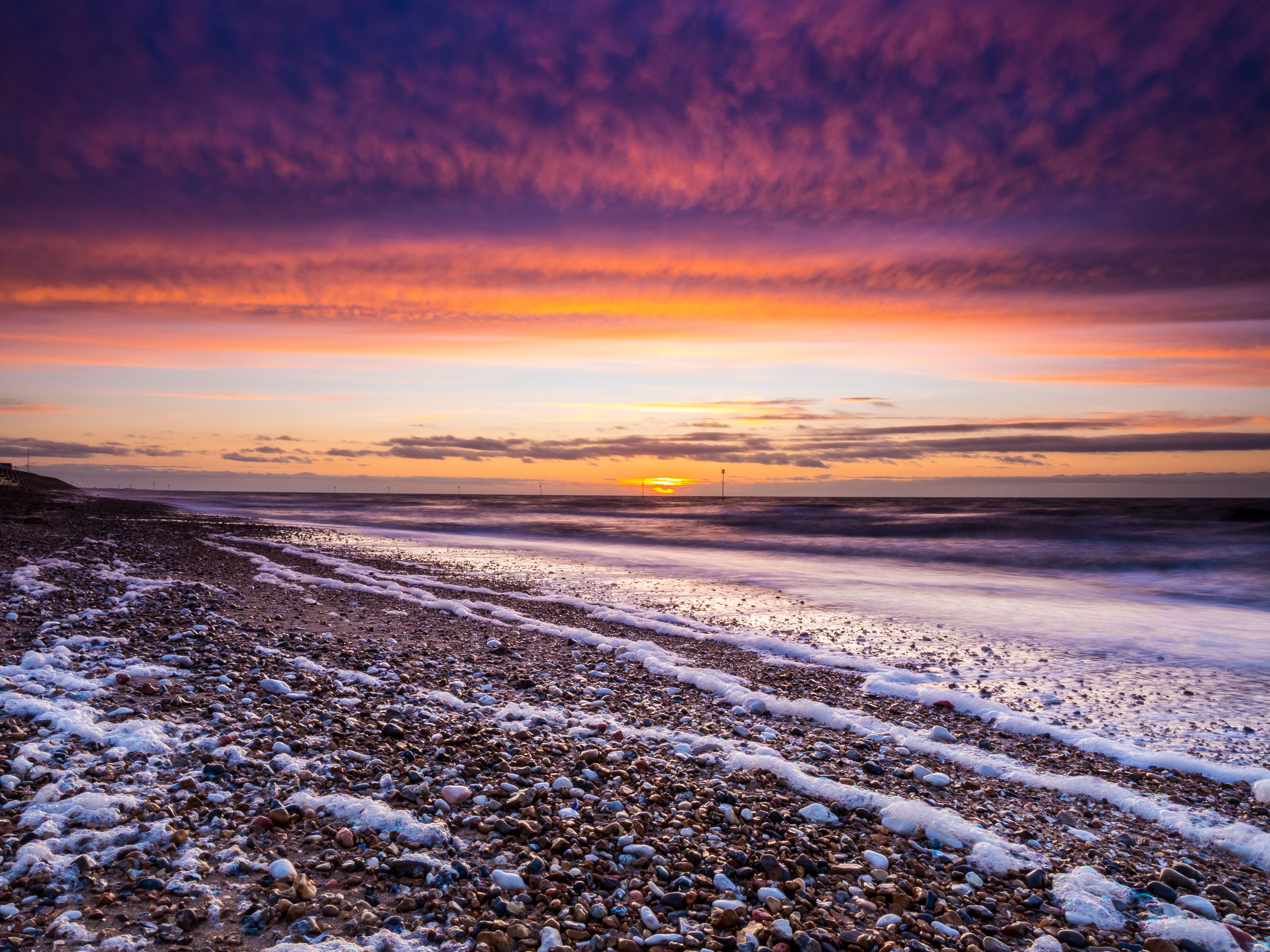
Visiting Holkham
T raveling east from Hunstanton brings you to Holkham where, as the locals say, “the sky meets the sea.” Central to the area is Holkham Hall, recognised as one of the 10 most magnificent palaces, houses, and castles in Britain. The grand Palladian-style Hall and gardens are worth a visit, but if you want to see the beach where the Queen sometimes strolls, follow the signs to Holkham’s nature reserve.
There’s a large parking lot here, from where you can walk through a forest of pine trees full of wildlife, including whitethroat, blackcap and willow warblers; with colorful butterflies and wild flowers in abundance. Then, just when you think it couldn’t get any better, you break through the trees, onto one of the wildest beaches in England.
This is Holkham Bay, the most extensive, diverse and dramatic nature reserve on Norfolk’s north coast. The place is a maze of creeks, meandering through flat sand and hilly dunes. The beach stretches east and west, and a mile or more out to the distant sea, making a nesting ground for shorebirds like plovers and oystercatchers. You’ll find their pebble-patterned eggs among the flotsam and tough little dune plants.

'Evening light shot of the barrier dunes and dune grass at Holkham, Norfolk.Image taken with polarising filter to boost colour and saturation.More Norfolk images at'
Visiting Wells-next-the-Sea
Wells-next-the-Sea is the next stop along the coast. The most agreeable way to get there from Holkham is on foot, following signs that take you through the pine forest.
In a recent TV program, British character actor Timothy Spall sailed into Wells-next-the-Sea and proclaimed it one of Britain’s hidden gems, blessed with natural beauty that he had never heard of before. It’s the same for many Brits. Stop at this delightful little town and it’s hard to believe that you are less than three hours by road from the edge of London.
Named after several fresh-water wells in the area, Wells-next-the-Sea took its name in the early 1800s to distinguish it from other places in Norfolk named Wells. Its biggest attraction is a long, sweeping beach, leading to a picturesque harbor dotted with fishing boats, where children fish for crabs, and stalls sell freshly caught seafood.
Thanks to silting over the years, the town itself is a little way inland, a network of narrow streets, old alleys, and yards, with a high street full of individual shops, boutiques, pubs and cafés. Georgian and Victorian architecture abounds.
In the early to mid-1800s, there were three shipyards in Wells, along with associated ship-building trades. From its port, coal, timber, and salt were imported, and corn, barley, and malt exported. Many of the granaries still exist, including one with a distinctive overhanging gantry, standing on the harbor, and now turned into luxury apartments.
Wells-next-the-Sea is one of the two most attractive towns on this coast. Sheringham is the other. Traveling from Wells to Sheringham, it’s worth pausing briefly at the small coastal village of Blakeney, and then Cley to check out that village’s beautifully restored 19th-century windmill.

Visiting Sheringham
Sheringham made its name in the late 19th and early 20th centuries when the fishing industry was at its peak. Today it still remains the place to eat seafood. Look for small restaurants with signs proclaiming food such as “Fresh crabs, boiled daily, dressed or undressed.” The town has been a popular seaside resort since Victorian and Edwardian times, and its architecture reflects those ages as you follow the High Street down to the sea, beach and promenade.
It’s a thriving town, yet unspoiled by commercialism. You might find modern stores selling computers and electronics, but they’ll be alongside art galleries and small shops with antiques and fishing tackle, and there’s a market on Saturdays. There’s also a small theater that boasts a summer repertory season, and program concerts, films and art exhibitions throughout the year, and a traditional British pantomime at Christmas.
Sheringham is also the start of the Poppy Line, a full-size steam railway that tours the coast, stopping at Victorian stations along the way. You can take lunch or an evening meal on the train.
Onwards then by way of the wildlife viewing platform in Sheringham Park, opened by Prince Charles in 1988, and so to Cromer with another Royal connection. Its golf club has a Royal prefix, granted by Edward VII.

Visiting Cromer
C romer is the last stop on Norfolk’s north coast before it turns south and becomes the county’s west coast. The place is a mixture of ancient and modern. If you want big department stores and the hustle-bustle of a busy town, they’re here for the taking. But in the midst of all this modernity stands Cromer’s 14th-century parish church, the tallest in Norfolk. Once past that and you are into the old town, where narrow streets wind past colorful houses, shops and boutiques, down to the sea.
Piers have played an important role in British holidays since Victorian times, and the one at Cromer, opened in 1901, is one of the country’s oldest. Unspoilt by the flashing lights and clashing noises of amusement arcades found on so many British piers, it offers a pleasant walk out to sea, from where you can look back on the splendor of the town’s cliff-top position. It also offers one of Britain’s few remaining end-of-pier variety shows. If you fancy an evening of singers, dancers, comedians and ventriloquists, it’s worth booking for something quintessentially British, which might soon be gone for ever.
And, as the lights go down and the curtain goes up, who knows who might be sitting next to you?

Tides out and the sun rises on Cromer beach, Norfolk, uk
* Originally published in 2013.
BHT newsletter
You may also like.
- Most Recent

Balmoral Castle will open to vis...
King Charles will open parts of Balmoral Castle used by the royal f...

WATCH: Footage of Queen Elizabet...
On Nov 22, 1963, President John F. Kennedy was assassinated in Dall...
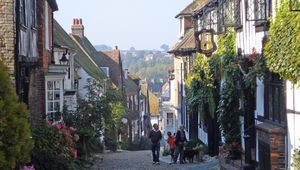
Are these the prettiest streets ...
Are these the prettiest streets in Britain? Get the cameras ready b...

Travel through time at England's...
Ever wondered how travelers would get rest while crossing countries...
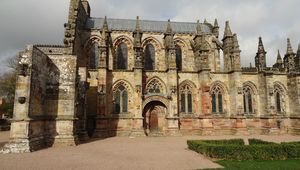
Scotland's mysterious Rosslyn Ch...
Long the focus of folklore and legend, including Dan Brown's Da Vin...
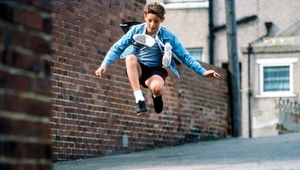
WATCH: Five modern classic Briti...
Looking for something new to watch? What about these British classi...
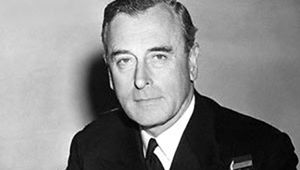
Lord Louis Mountbatten's assassi...
On August 27, 1979, Mountbatten and three members of his holiday pa...
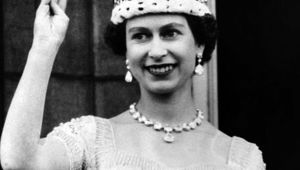
Queen Elizabeth II's Coronation:...
The Coronation of Queen Elizabeth II was ground-breaking in its own...
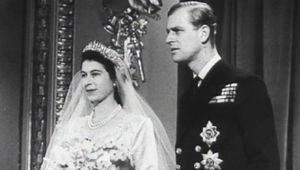
Queen Elizabeth II bought her we...
Two years after the end of the Second World War Elizabeth purchased...

Have you seen this footage of th...
This footage of the Royals at Windsor really is special.

The 1578 Progress To Norwich: In The Footsteps of Elizabeth I
As we approach the anniversary of Elizabeth I’s summer progress of 1578, I’ve been looking back at this historic tour. Having departed Suffolk, Elizabeth began her ‘Royal Progress’ in Norwich. Arrangements had been made in the City for Her Majesty and her London train of followers to stay for five days with the Queen lodging at the Bishop’s Palace. I recently headed to Tudor Norfolk, to follow in her footsteps from her reception at the city gates to her lodgings adjacent to the cathedral. I was joined by Aidan Norrie whose special interest is in Elizabeth, her iconography and Elizabeth pageants.
This blog contains an excerpt from an article on biblical typologies in Elizabethan civic entertainments, by Aidan Norrie. The excerpt focuses on the East Anglian Progress of 1578, and is interspersed with a gallery of images, assembled specifically to accompany a podcast episode in The Tudor History & Travel Show .
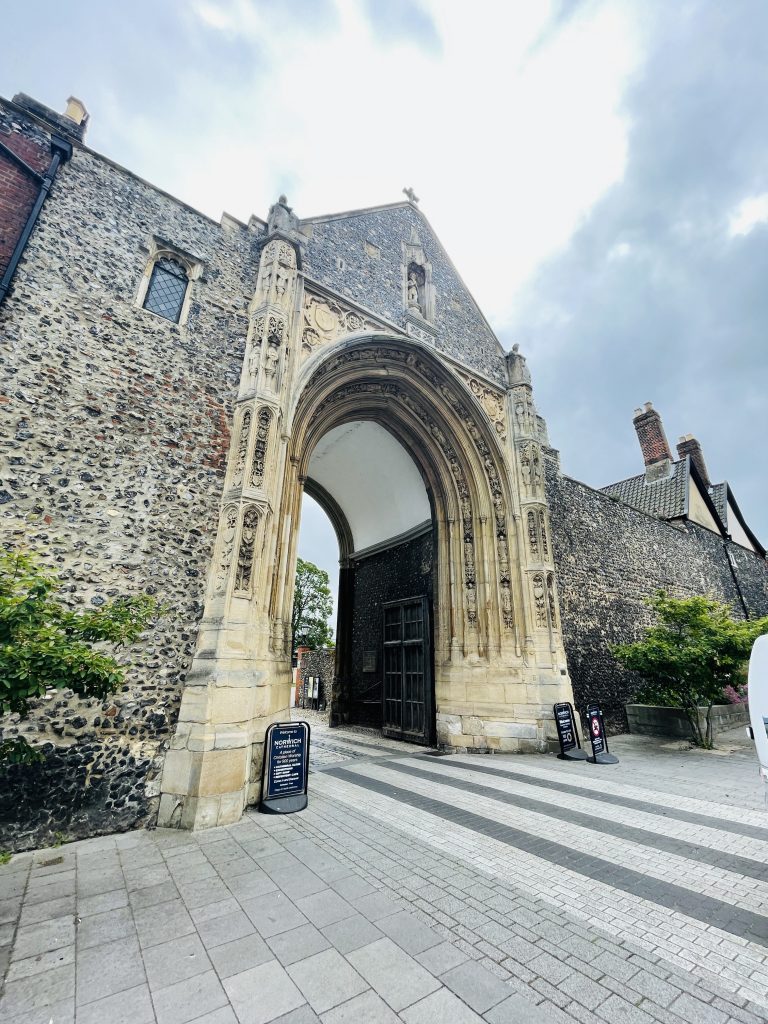
The East Anglian Progress of 1578
Norrie, A., 2021. Biblical Typology and Royal Power in Elizabethan Civic Entertainments. Royal Studies Journal, 8(1), pp.54–78. DOI: http://doi.org/10.21039/rsj.314
As had been widely expected, shortly after her coronation, Elizabeth’s first parliament assembled and enacted the Elizabethan Religious Settlement. In addition to returning the Church of England to Protestantism, the Edwardian Book of Common Prayer, with some conservative alterations, was prescribed for use in all church services. The definitive statement of the Church of England’s doctrine was finally codified in 1571, when the Thirty-Nine Articles of Religion were agreed to and promulgated.38 Despite being a decade into her reign, Elizabeth still faced opposition from Catholic recusants and puritan agitators, and the 1570s would prove to be an uneasy period for Elizabeth and her religious settlement. The Earl of Sussex had successfully suppressed the Northern Rebellion of 1569, which had seen the earls of Westmorland and Northumberland attempt to re-impose Catholicism in England by deposing Elizabeth and replacing her with Mary, Queen of Scots. 39 This victory was only short-lived: spurred on by the rebellion’s failure, Pope Pius V excommunicated Elizabeth in the infamous papal bull, Regnans in Excelsis, which was issued on 25 February 1570. The bull “absolved” the English from loyalty to their Queen, and purported to “deprive … Elizabeth of her pretended title to the crown.” 40 The regime quickly responded by enacting a new treason law that, amongst a number of provisions, made anyone who claimed that Elizabeth was a “Heretick, Schismatick, Tyrant, Infidel, or Usurper of the Crown” or who argued that the Queen “ought not to enjoy the Crown” guilty of treason. 41
Not long after, the Ridolfi Plot, which (also) sought to assassinate Elizabeth and place Mary on the throne, was foiled in September 1571. If successful, Mary would have been married to Thomas Howard, Duke of Norfolk, and the country would have been returned to the Catholic fold. Norfolk was found guilty of treason for his part in the plot, and was beheaded on 2 June 1572. 42 Mary’s role in the plot was furiously debated and denounced in parliament, and Elizabeth increasingly distanced herself from her prisoner, leaving her to languish in the Midlands under house arrest in the custody of George Talbot, Earl of Shrewsbury, and his estranged wife, the indomitable Bess of Hardwick. 43 In addition, Elizabeth’s secretaries Sir Francis Walsingham and William Cecil, Baron Burghley, paid closer attention to Mary’s activities, placing spies in her household and intercepting her correspondence. 44
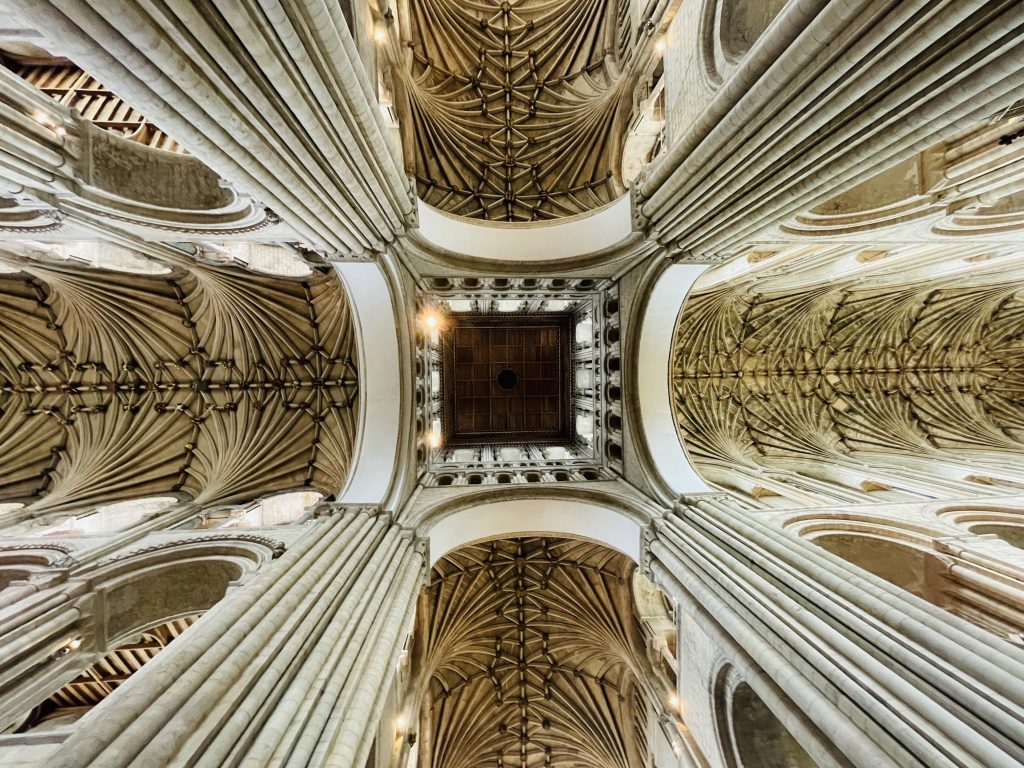
While the issue posed by Catholics was somewhat defused in the aftermath of Norfolk’s execution, Elizabeth began to face issues within her own church. Her first Archbishop of Canterbury, Matthew Parker, died in May 1575, and was replaced by Edmund Grindal (previously Archbishop of York) in December 1575. Less than two years later, in June 1577, Elizabeth suspended Grindal for failing to suppress puritanism and enforce uniformity throughout his province. 45 Grindal’s failures had impacts at the diocesan level—especially in the Diocese of Norwich.
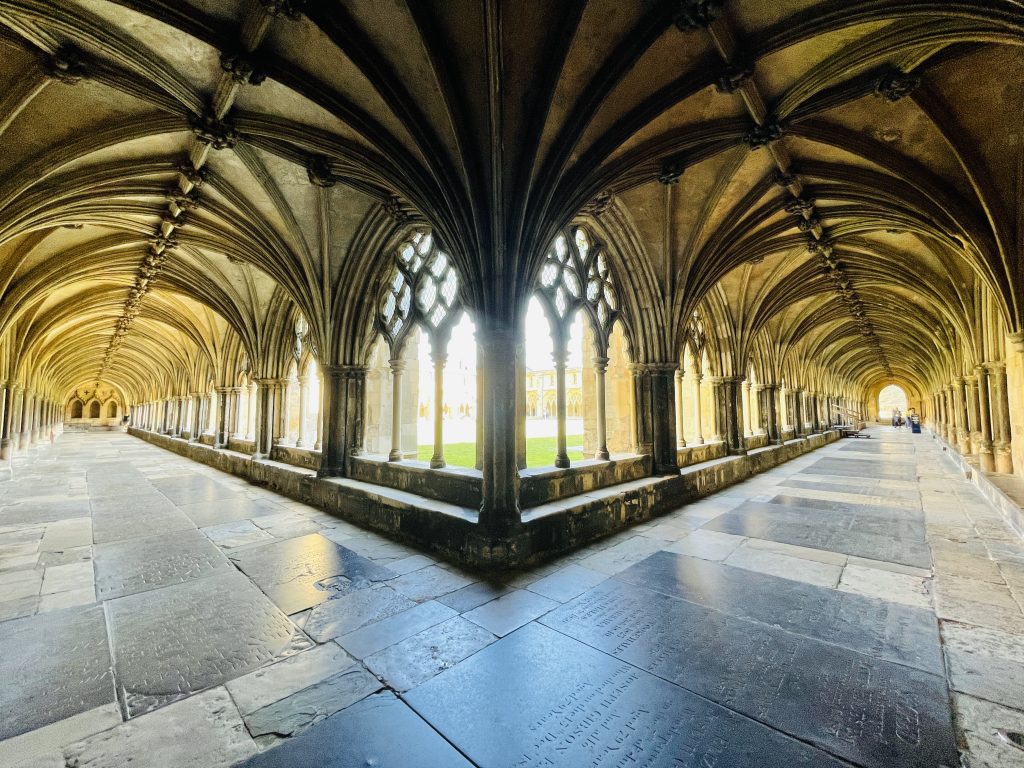
It was against this fraught backdrop that Elizabeth progressed to East Anglia in the summer of 1578. Between 31 July and 30 August 1578, Elizabeth and her court visited various towns and noblemen’s estates across Norfolk and Suffolk. 46 Much of the latter part of the tour was spent in Norwich, and two commemorative accounts of the Queen’s visit were published soon after: Bernard Garter’s The Joyfull Receyving of the Queenes most excellent Majestie into hir Highnesse Citie of Norwich was entered into the Stationers’ Register on 30 August—only eight days after the visit to the city had concluded—and Thomas Churchyard’s pamphlet, A Discourse of the Queenes Majesties entertainement in Suffolk and Norffolk, was entered in the Stationers’ Register on 20 September. 47
As was typical, the decision to progress to East Anglia was not arbitrary. During the mid-1570s, the Diocese of Norwich was plagued by religious non-conformity: Norfolk was home to one of the largest Catholic populations in England, and Norwich itself was a hotbed of puritanism. The first Elizabethan Bishop of Norwich, John Parkhurst, died in February 1575. Parkhurst, while a committed Protestant, had done a poor job of enforcing uniformity in the diocese. His successor, Edmund Freake, who was appointed in November 1575, had a Herculean task in enforcing uniformity on the diocese. 48 Freake, however, seemed to be more interested in suppressing puritanism than Catholicism, which caused him to come into conflict with his diocesan chancellor, the puritan John Becon. Freake appealed to the Privy Council for assistance in this conflict with Becon, and Elizabeth’s progress was intended to ensure that the Council’s decision—that the Elizabethan Settlement be enforced and that Catholic and puritan non-conformity was punished with equal severity—was being put into action. 49
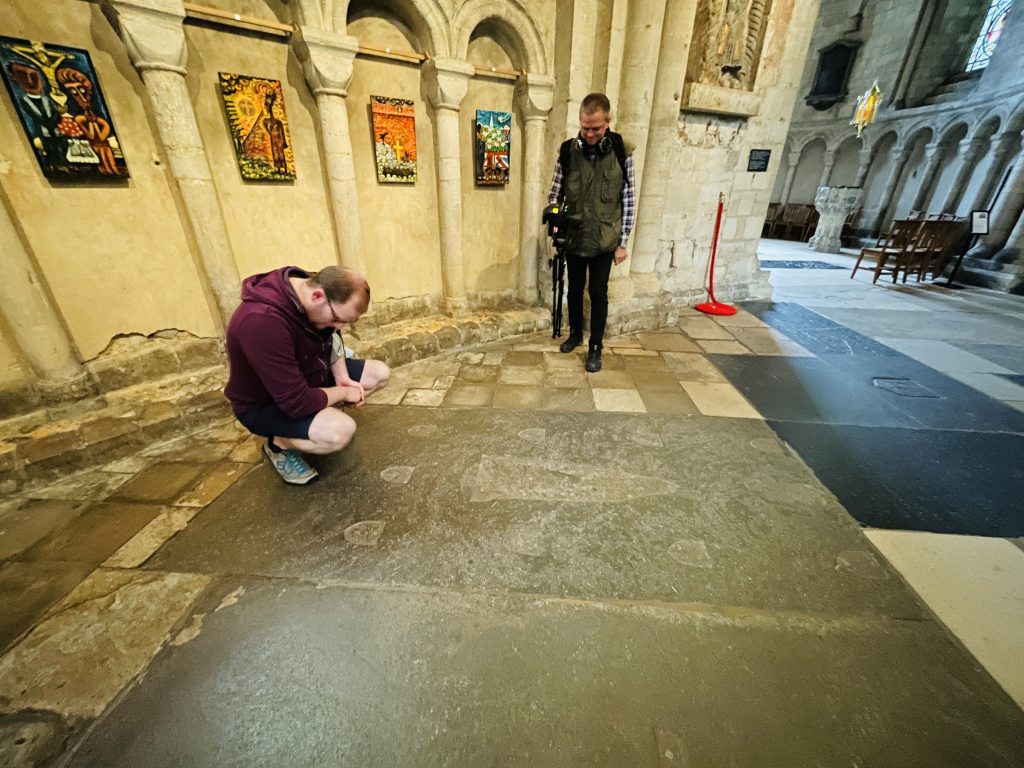
The visit of Elizabeth and her councillors also allowed them to meet with the city’s Dutch Protestant refugees. Since 1564, Dutch Protestant textile workers had been settled in Norwich in a quasi-religious refugee programme, where they had been allowed to set up their own church. By 1578, nearly one third of Norwich’s 16,000 residents were Protestant immigrants from the Low Countries. 50 By the middle of the sixteenth century, Norwich had grown to become the second largest and second wealthiest city in the country. The Dutch Protestant population, as well as their export industries, would be an important theme throughout the entertainments performed in Norwich.
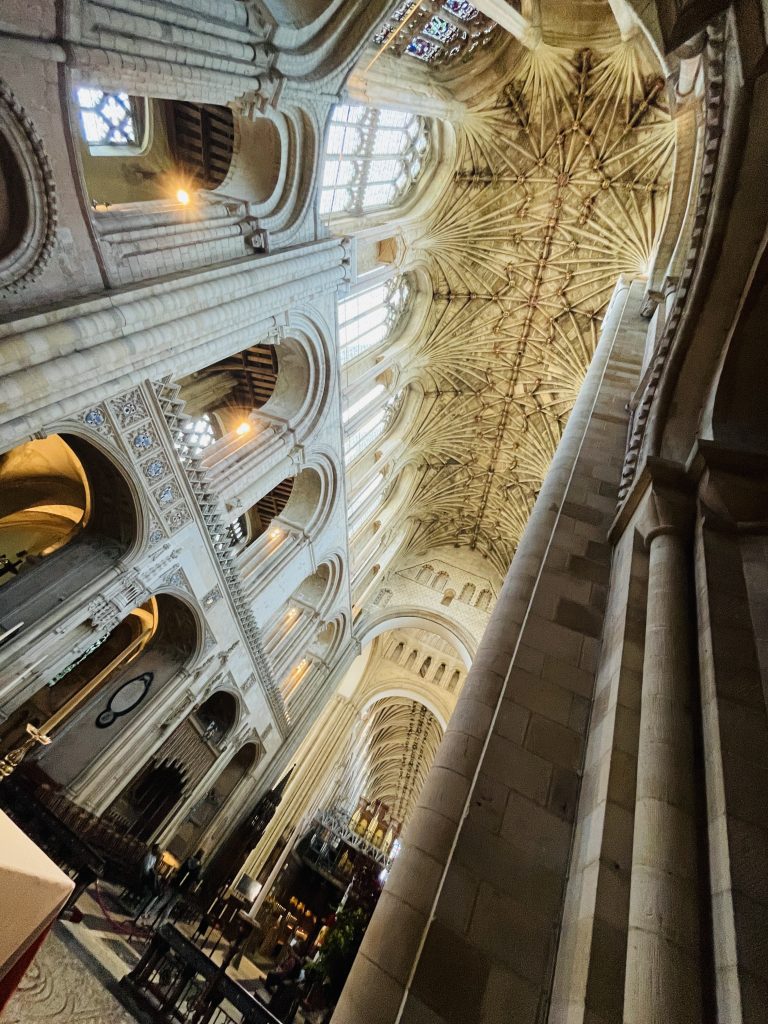
38 See: Peter Marshall, “Settlement Patterns: The Church of England, 1553–1603,” in The Oxford History of Anglicanism, Volume I: Reformation and Identity, c.1520–1662, ed. Anthony Milton (Oxford: Oxford University Press, 2017), 45–62.
39 On the Northern Rebellion, see: K.J. Kesselring, The Northern Rebellion of 1569: Faith, Politics, and Protest in Elizabethan England (New York: Palgrave Macmillan, 2010).
40 Pius V, “The Bull of Excommunication against Elizabeth (February 25, 1570),” in Elizabeth I and Her Age: Authoritative Texts, Commentary and Criticism, ed. Donald Stump and Susan M. Felch (New York: W.W. Norton, 2009), 157.
41 Owen Ruffhead, ed., The Statutes at Large, from the First Year of King Edward the Fourth to the End of the Reign of Queen Elizabeth (London, 1770), 583. The Act is 13 Eliz. 1 c. 1.
42 Paul E.J. Hammer, “The Catholic Threat and the Military Response,” in The Elizabethan World, ed. Susan Doran and Norman Jones (London: Routledge, 2011), 632.
43 Kristen Post Walton, Catholic Queen, Protestant Patriarchy: Mary, Queen of Scots, and the Politics of Gender and Religion (New York: Palgrave Macmillan, 2007), 165, 170. For a summary of the parliamentary response, see: J.E. Neale, Elizabeth I and Her Parliaments, 1559–1581 (London: Jonathan Cape, 1953), 241–290.
44 Curtis Breight, Surveillance, Militarism and Drama in the Elizabethan Era (London: Macmillan, 1996), 71.
45 Patrick Collinson, “Grindal, Edmund (1516×20–1583),” Oxford Dictionary of National Biography, doi:10.1093/ref:odnb/11644.
46 Cole, The Portable Queen, 191. A full description of the 1578 progress can be found in: Zillah Dovey, An Elizabethan Progress: The Queen’s Journey into East Anglia, 1578 (Stroud: Sutton Publishing, 1996).
47 David Galloway, ed., Records of Early English Drama: Norwich, 1540–1642 (Toronto: University of Toronto Press, 1984), 243.
48 Cole, The Portable Queen, 141–145; Patrick Collinson, “Pulling the Strings: Religion and Politics in the Progress of 1578,” in The Progresses, Pageants, and Entertainments of Queen Elizabeth I, ed. Jayne Elisabeth Archer, Elizabeth Goldring, and Sarah Knight (Oxford: Oxford University Press, 2007), 127.
49 Collinson, “Pulling the Strings,” 127; C.S. Knighton, “Freake, Edmund (c.1516–1591),” Oxford Dictionary of National Biography, doi:10.1093/ref:odnb/10136.
50 Matthew Woodcock, Thomas Churchyard: Pen, Sword, and Ego (Oxford: Oxford University Press, 2016), 192.
Sources & Further Reading
Find Aidan on Twitter @aidannorrie.
Aidan’s other publications include Playfulness in Shakespearean Adaptations , edited by Marina Gerzic and Aidan Norrie and New Directions in Early Modern English Drama: Edges, Spaces, Intersections , edited by Aidan Norrie and Mark Houlahan.
To watch the video associated with this blog and podcast, click here .
To read about hidden tales of Elizabeth I’s burial, click here .
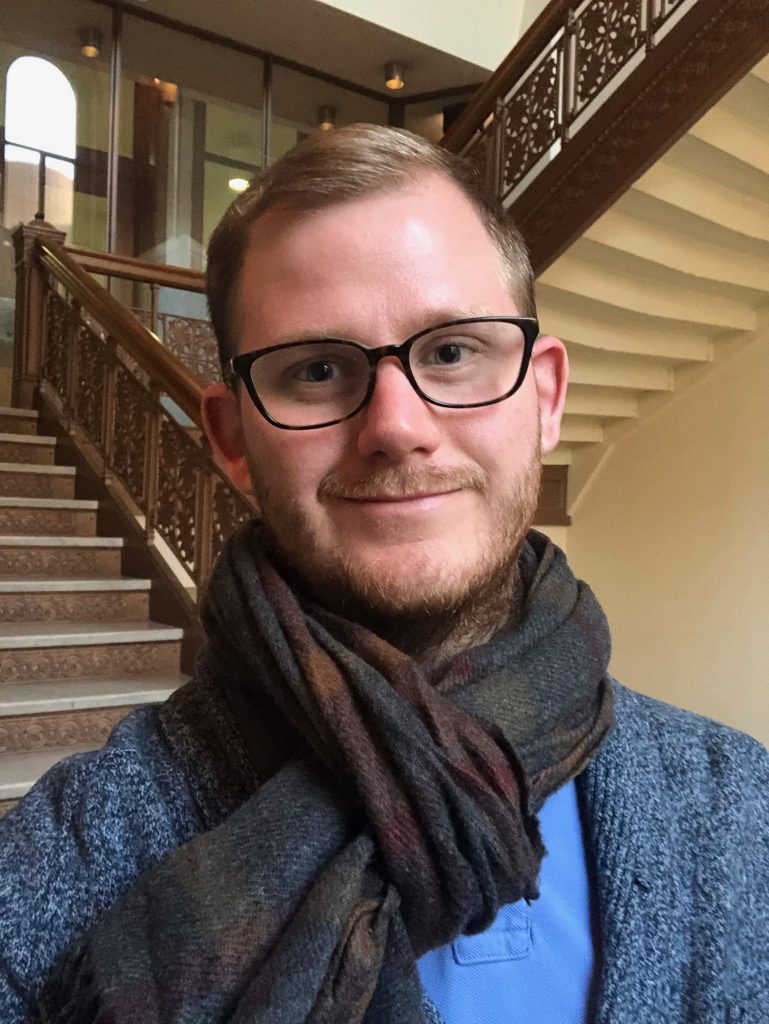
Aidan Norrie is Lecturer in History and Programme Leader at University Campus North Lincolnshire and the Managing Editor of The London Journal . Aidan is the author of Elizabeth I and the Old Testament: Biblical Analogies and Providential Rule (2023), and has co-edited several collections, including the four-volume series, English Consorts: Power, Influence, Dynasty (2022; with Carolyn Harris, J.L. Laynesmith, Danna Messer, and Elena Woodacre), Women on the Edge in Early Modern Europe (2019; with Lisa Hopkins), and From Medievalism to Early-Modernism: Adapting the English Past (2019; with Marina Gerzic). Aidan’s articles on the 1578 Norwich progress have been published in the Royal Studies Journal , Shakespeare Bulletin , and New Directions in Early Modern English Drama: Edges, Spaces, Intersections (2020).
Similar Posts
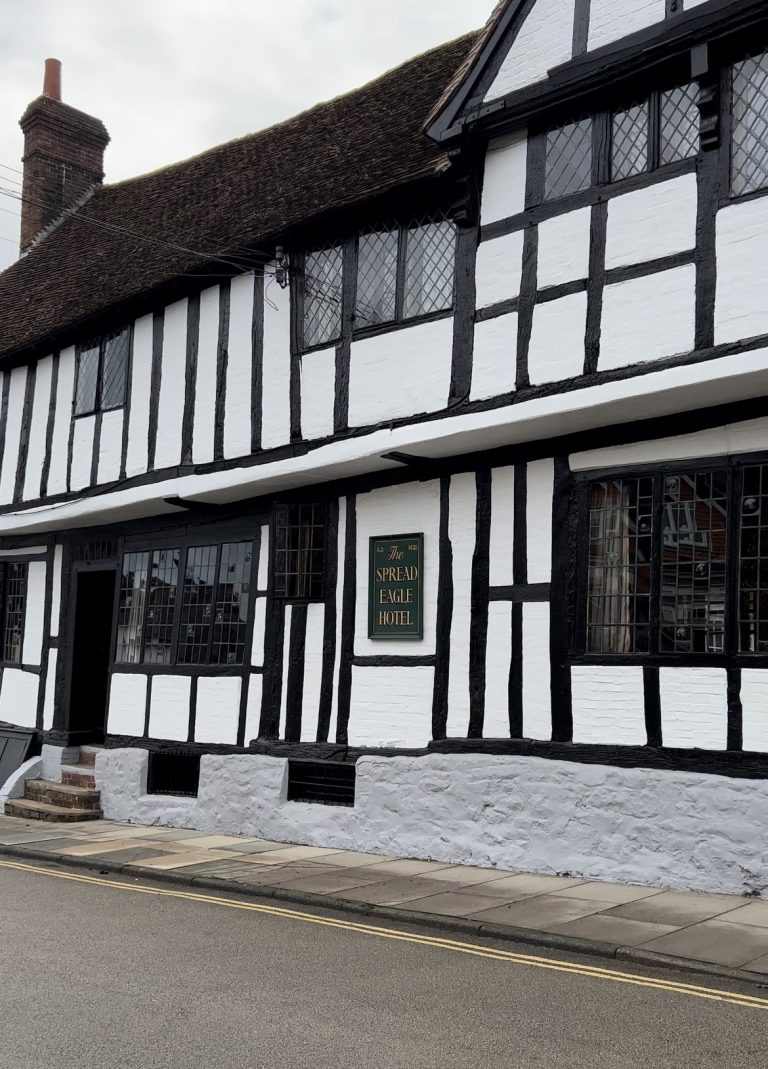
The Spread Eagle Hotel and Spa, Midhurst, West Sussex
The Spread Eagle is a charming English historic inn retaining its heritage yet providing every contemporary comfort. It is located in the heart of the South Downs National Park in the pretty Sussex market town of Midhurst. It is exceptionally convenient for visiting the nearby ruins of Cowdray House.

Anne Boleyn is Presented as Queen at Greenwich Palace
Easter is upon us; it is a time of rebirth and celebration. But in Tudor terms, what springs to mind…
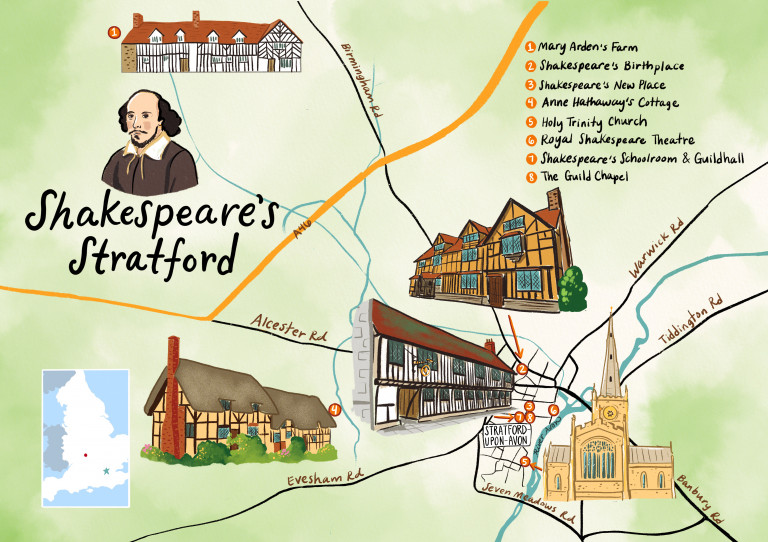
A Tudor Weekend Away in Stratford-Upon-Avon
In this guide, we travel to Stratford-Upon-Avon, birthplace of William Shakespeare, to visit some of the best Tudor places in the area.
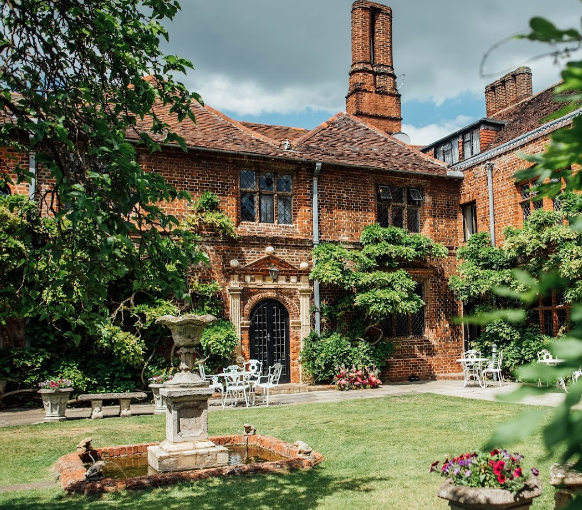
Seckford Hall, Suffolk
Seckford Hall is a historic country house set in acres of stunning grounds and gardens. Now a luxury hotel, guests can stay in unique accommodation, including the room once visited by Elizabeth I.
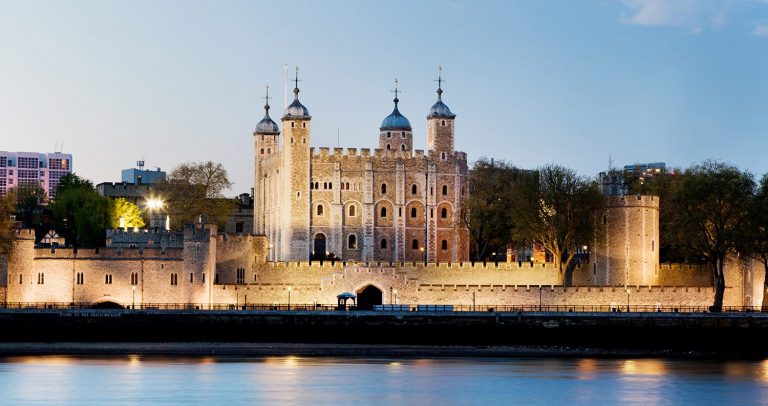
Anne Boleyn’s Execution: The Surprising Truth
This post contains some affiliate links How does the run-up to 19 May and the execution of Anne Boleyn make…
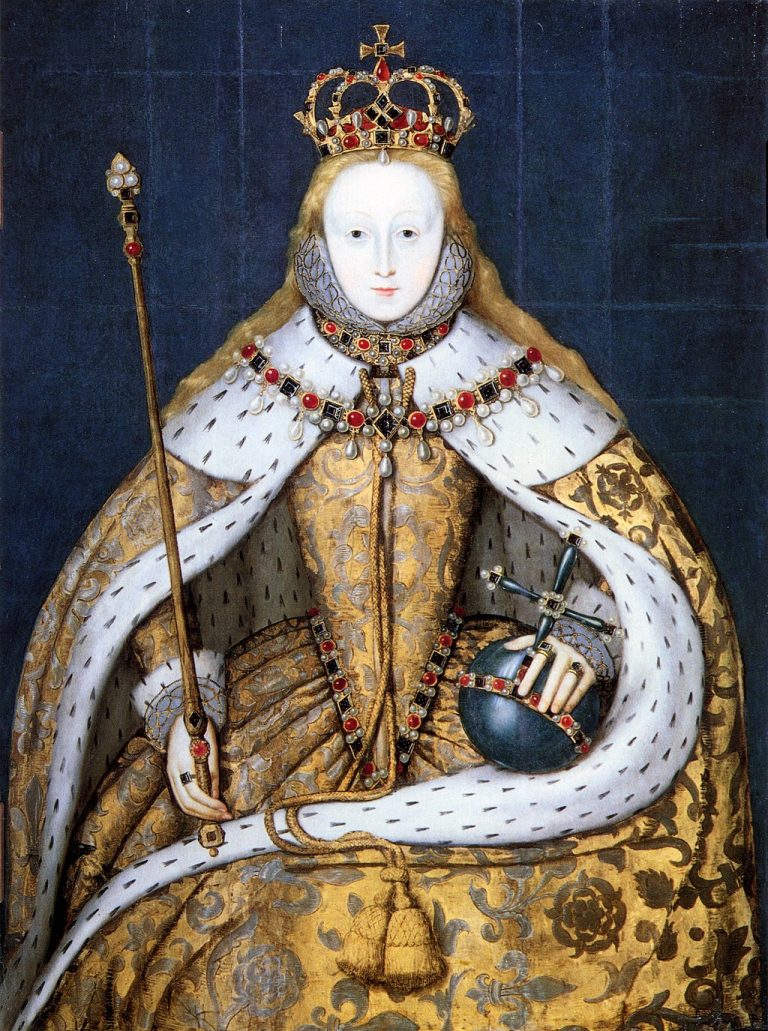
Elizabethan Art: A Powerful Device For Royal Representations
The last of the five monarchs of the House of Tudor, Elizabeth I succeeded to the throne in 1558. Despite…
One Comment
Many thanks to Sarah and Aidan for this extraordinary blog/article! Surprised to learn that a third of Norwich’s population were Dutch Protestant refugees at this time ?
Leave a Reply Cancel reply
Your email address will not be published. Required fields are marked *
- International edition
- Australia edition
- Europe edition
The Queen's golden jubilee tour
The Queen's golden jubilee itinerary.
May 1: The Queen, accompanied by the Duke of Edinburgh, will first visit the south-west of England. They will both begin their tour at the National Maritime Museum, Falmouth, Cornwall, before attending a lunch to celebrate the 125th anniversary of the diocese of Truro. After meeting representatives of the community in Cornwall at Truro Cathedral, they will attend a musical performance by young people in Exeter and a reception at County Hall, Exeter. The Queen will also view a gardens in Trelissick, while the Duke will visit Falmouth College of Art.
May 2: The Queen and the Duke will visit the Farmers' Market and Vivary Park in Taunton, then go on to Wells, where the Duke will also present award scheme gold awards. In the afternoon they will view Bath Abbey restoration and attend a reception at the Pump Rooms.
May 7: The couple will then move on to the north-east, where they will open Winter Gardens in Sunderland, the Metro Link between Sunderland and Gateshead and the Millennium Bridge. Other visits will include Fellgate primary school, the Baltic Centre and the gala event at City Hall, Newcastle.
May 8: The next day both will pay visits to Seaham, Easington, Blackhall Rocks, Durham Castle, Darlington and open the Millennium Place, Durham. The Duke will present awards at Peterlee, and visit Stockton Campus, Durham University.
May 9: The Queen and Duke will visit east London.
May 10: The couple will move on to Higginson Park, Marlow and Bisham Abbey National Sports Centre, and the Queen will visit Aylesbury.
May 16-17: The Queen and Duke will attend the Royal Windsor Horse Show. The next day they will take the salute at All The Queen's Horses at the Royal Windsor Horse Show.
May 20: The Queen and the Duke will visit Chelsea Flower Show.
May 21: They are scheduled to open the new Queen's Gallery at Buckingham Palace.
May 22: The couple will attend an reception at the Royal Academy of Arts, London.
May 23: The Queen and Duke will visit Scotland. The tour will begin with a thanksgiving service at Glasgow Cathedral, followed the next day by the opening of the Jubilee Wheel at the Millennium Link between Forth & Clyde and Union Canals, Falkirk. They will also give a reception in the palace of Holyroodhouse for national Scottish figures.
May 25: They will open the general assembly of the Church of Scotland, Edinburgh and give a garden party at the palace of Holyroodhouse.
May 26: The couple will attend a service at St Giles' Cathedral, Edinburgh.
May 27: They will visit the Isle of Skye, attending lunch at Stornoway, Isle of Lewis and attending a tea party at Wick, Caithness.
May 28: The couple will visit Duthie Park, Aberdeen and visit Scottish parliament, sitting at King's College, Aberdeen University. The Queen will open the Scottish school of contemporary dance, Dundee, while the Duke visits Dundee University's Wellcome Trust Biocentre. Both of them will attend a reception at City Chambers, Dundee.
May 29: The Queen and Duke will visit Lauder, Scottish Borders and Melrose Abbey, attend a lunch hosted by Scottish Borders council and then attend a borders gathering, Melrose Rugby Club.
June 1: They will attend a classical concert, The Queen's Concert, in the gardens at Buckingham Palace.
June 2: Both will attend a jubilee church service at St George's Chapel, Windsor Castle.
June 3: They will attend events in Windsor and Slough. They will also hold a pop concert, the Queen's concert, in the gardens at Buckingham Palace, light a national beacon in the Mall and view a fireworks display.
June 4: The Queen and Duke will attend a service of thanksgiving at St Paul's Cathedral, after a ceremonial procession from Buckingham Palace. Both will also attend a lunch hosted by the lord mayor at Guildhall in the City of London. They will make a balcony appearance at Buckingham Palace and watch an RAF jet fly past.
June 6: The Queen and Duke will visit north London; followed by a garden party at Lambeth palace.
June 7: The couple will be tour the south-east, starting with an attendance at the South of England show in Ardingly, West Sussex.
June 10: The couple will give a reception for representatives of different faiths at Buckingham Palace.
June 11: The Queen and Duke will be touring Wales. After arriving at Llanfairpwll railway station, they will visit a crafts exhibition and fair at Beaumaris Castle, Anglesey, and attend a thanksgiving service at Bangor Cathedral. They will have lunch hosted by the National Trust Wales and the chairman of Gwynedd countycouncil at Penrhyn Castle and attend a Jubilee sports event, in Colwyn Bay.
June 12: On June 12 the Queen and Duke will attend Powys picnic in Dolau, open an improvement works and new lock and park in Llanelli. They will attend a lunch hosted by Camarthenshire county council, visit Carmarthenshire enterprise day business exhibition and attend a festival in Margam park.
June 13: The couple will drive through the shopping centre of Bridgend, attend welcome to the valleys at Treorchi, Rhondda Valley, and visit Heritage Park, Trehafod, Porth. Lunch will be hosted by Newport county borough council, followed by a visit the Welsh assembly and a reception hosted by Cardiff city council.
June 15: The Queen and Duke will take the salute at her majesty's birthday parade, Horseguards.
June 17: They will attend the service of the Order of the Garter at St George's Chapel, Windsor, and give a dinner for European sovereigns at Windsor Castle.
June 18-22: The Queen and Duke will attend Royal Ascot.
June 25: They will visit west London.
June 26: They will give a dinner for representatives of the armed services at Windsor Castle.
June 27: Both will visit the armed forces, Portsmouth, and tour Portsmouth.
July 2: The couple will tour the Midlands, starting with a visit Touchwood, Solihull's town centre redevelopment. The Queen will open a science and learning centre, Digbeth, Birmingham, and they will both attend a reception and concert in Symphony Hall, Birmingham.
July 3: They will visit the National Museum of Brewing, Burton upon Trent. The Queen will then visit Brewhouse Arts Centre, Burton upon Trent, while the Duke visits Best Foods' Marmite factory. They will then visit the National Memorial Arboretum, Alrewas, Staffordshire; and the Royal Show, Stoneleigh, Warwickshire.
July 4: The Queen and Duke will visit South London.
July 5: They will attend a parade in the gardens of Buckingham Palace for all her majesty's body guards and the in-pensioners of the Royal Hospital Chelsea.
July 9: The Queen, accompanied by the Duke, will present medals to the winners of the Queen's golden jubilee poetry competition for schools, at Buckingham Palace. They will then give a party in the gardens of the palace.
July 11: They will be then tour Yorkshire, starting with a visit to Leeds Civic Centre, and the set of Emmerdale. The Queen and the Duke will also visit Harewood House and attend a jubilee celebration, and meet Queen's golden jubilee baton relay runners. The Duke will visit National Coal Mining Museum, Wakefield, and Bradford grammar school.
July 12: The Queen and Duke will attend a service for rural life at Beverley Minster and visit Beverley Racecourse for the county fair and golden jubilee race.
July 16: The couple will give a garden party in the gardens of Buckingham Palace, when guests will include young people who have been born since the 1977 silver jubilee.
July 17: They will be in East Anglia, starting with a visit to Ipswich and a visit to Stowmarket. They will attend a lunch in Bury St Edmund's and a performance in Abbey Gardens, Bury St Edmund's.
July 18: The Queen and Duke of Edinburgh will visit Norwich Castle Museum, Norwich and open the Forum Building (the Norfolk and Norwich Millennium Library). The Duke will open the Norfolk Nelson Museum, Great Yarmouth. They will also give a garden party at Sandringham House.
July 23: They will open the new greater London authority building and attend a gala at Covent Garden.
July 24: The couple will go to the north-west wehre they will visit the King's school, Macclesfield, and Christie Hospital, Greater Manchester. The Queen and Duke will attend a service celebrating the new city centre at Manchester Cathedral and the Duke will open Imperial War Museum North.
July 25: The Queen will visit Walker Art Gallery, Liverpool, while the Duke will present award scheme gold awards, in Bootle, Liverpool. The Queen and Duke will attend a reception at the Walker Art Gallery and visit Liverpool town hall. They will also open the Commonwealth Games in Manchester.
July 26: The Queen and the Duke will visit Commonwealth Games sports venues and the athletes' village.
July 30: They will give a garden party at Buckingham Palace, when guests will include representatives of charities of which the two are patrons.
July 31: The couple will then go to the East Midlands. On the first day the Queen will open Lindsey Lodge Hospice extension, Scunthorpe. Accompanied by the Duke, she will then visit Scunthorpe town centre, visit Normanby Hall and attend a performance at the National Ice Centre, Nottingham. The Duke will present award scheme gold awards at 20/21 Arts Centre, Scunthorpe.
August 1: The Queen and Duke will then see Leicester city centre, visit the National Space Centre, Leicester and attend a celebration at Pride park, Derby.
August 4: The Queen, accompanied by the Duke, will close the Commonwealth Games in Manchester.
August 5: The Queen and the Duke will attend a community event, and a reception which will include guests from the Duchy of Lancaster in Preston, followed by a garden party at Carlisle Castle, Cumbria. They will also attend the Edinburgh Military Tattoo, Edinburgh Castle.
August 7: The couple will give a garden party at Balmoral Castle.
- Queen's golden jubilee
Most viewed

Local History Videos

Old Images of Norwich, Norfolk
Glimpse history through old images of Norwich, Norfolk, England.
George V in Norwich (1912)
It’s only 30 seconds of a silent, black and white film, but see the huge crowds that turned out for the arrival of King George V in 1912.
King George V
- Born: 3 June 1865, Marlborough House, London
- Died: 20 January 1936, Sandringham Estate
- Parents: Edward VII, Alexandra of Denmark
- Spouse: Mary of Teck (m. 1893–1936)
- Children: King Edward VIII (later duke of Windsor); King George VI; Henry, duke of Gloucester; George, duke of Kent; Prince John; Mary, princess royal, who married the 6th earl of Harewood
ROYAL: King George V during visit to Norwich (1912) – British Pathé on YouTube
Queen Alexandra’ during’s WW1 Visit (1918)
Queen Alexandra of Denmark came to unveil a statue erected in the memory of Edith Cavell, a WWI nurse and humanitarian.
Edith Cavell was a British nurse celebrated for saving the lives of soldiers from both sides without discrimination, and for helping some 200 Allied soldiers escape from German-occupied Belgium during the First World War, for which she was arrested.
Queen Alexandra of Denmark
- Born: 4 December 1865, Swardeston
- Died: 12 October 1915, Tir national
- Born: 1 December 1844, Yellow Palace, Copenhagen, Denmark
- Died: 20 November 1925, Sandringham Estate
- Spouse: Edward VII (m. 1863–1910)
- Children included George V, Princess Victoria of the United Kingdom
Queen Alexandra makes appearance at Norwich (1918) – British Pathé on YouTube
Norwich Cattle Show (1919)
Xmas Beef Norwich Aka Norwich Cattle Show (1919) – British Pathé on YouTube
Prince Henry (1925)
In 1925, HRH Prince Henry laid the foundation stone of the new children’s block of the Norfolk and Norwich Hospital.
Prince Henry
- Born: 31 March 1900, York Cottage
- Died: 10 June 1974, Barnwell Manor, Barnwell
- Spouse: Princess Alice, Duchess of Gloucester (m. 1935–1974)
- Children: Prince Richard, Duke of Gloucester, Prince William of Gloucester
Prince Henry at Norfolk and Norwich Hospital (1925) – British Pathé on YouTube
Duke of York’s Visit (1925)
In 1925, the Duke of York arrived for the celebrations of the museum’s centenary.
Duke Of York (1925) – British Pathé on YouTube
Sir Baden-Power (1926)
In 1926, the Chief Scout, Sir R. Baden-Powell, attended the monster Rally of local scouts.
The Chief Scout – Sir R. Baden Powell On Sleeve As The Cheif Scout (1926) – British Pathé on YouTube
Norwich war memorial unveiled by ex-Private Withers (1927)
The Norwich War Memorial commemorated 3,500 war dead of the Great War (1914-1918), adn was unveiled by ex-Private Withers.
The arrival of 50,000 people to watch the unveiling shows the depth of grief for these young men even nine years after the end of the war.
Ex-private B.A. Withers, a disabled veteran of the Norfolk Regiment, appears in a picture on the Armistice Norfolk website.
On the day I uploaded this footage to Local History Videos.com, it had sat on YouTube for more than half a year and I was the 9th viewer. I often come across important but overlooked footage like this, which is why I set up this website.
NORWICH: Norwich war memorial unveiled by ex-Private Withers (1927) – British Pathé on YouTube

1920s Cattle Shows
Xmas Beef AKA Xmas Beef – Norwich Cattle Show (1920) – British Pathé on YouTube
Norwich Fat Stock Show (1923) – British Pathé on YouTube
Xmas Beef – Norwich (1927) – British Pathé on YouTube
Norwich Fat Stock Show (1928) – British Pathé on YouTube
Farming: Norwich Cattle Show (1929) – British Pathé on YouTube
Fine Fat Cattle (1929) – British Pathé on YouTube
1300 Years (1930)
In 1930, the Archbishop of Canterbury, 110 Bishops and Archbishops attended a service at Norwich Cathedral celebrating the thirteen hundredth anniversary of the creation of the diocese.
Te Deum Laudamus Aka The Deum Laudamus (1930) – British Pathé on YouTube
New Homes for Hospital Nurses (1932)
In 1932, Queen Mary visited the new homes built for hospital nurses.
“Never Weary In Well-Doing”! (1932) – British Pathé on YouTube
Norwich (1934)
This 1930s footage opens with views of Norwich Cathedral. We see the Cloisters and the grave of nurse Edith Cavell.
Next are various shots of the old buildings in Norwich, followed by the Marketplace next to the tramlines. Then it’s the Guildhall, street scenes, public gardens, views of the river, and people boating. It ends with Norwich Castle and the view across the city from the Castle Walls.
There are plenty of people wandering around the streets too.
The Gate To The Broads – Norwich (1934)
The Gate To The Broads – Norwich Aka Norwich – Scenes Of City & Its Surroundings (1934) – British Pathé on YouTube
Queen Mary’s Visit (1935)
Queen Mary arrived for the laying of the foundation stone for the new church of St Catherine at Mile Cross.
It may be 1935, but she still wears floor length dresses and coats.
Queen Mary (Mary of Teck)
- Born: 26 May 1867, Kensington Palace, London
- Died: 24 March 1953, Marlborough House, London
- Parents: Princess Mary Adelaide of Cambridge, Francis, Duke of Teck
- Spouse: George V (m. 1893–1936)
- Her grandchildren included Queen Elizabeth II
Queen Mary visits Norwich (1935) – British Pathé on YouTube
Queen Mary at Norwich (1935) – British Pathé on YouTube
Log Rolling (1935)
A small group of people watch antics in a swimming pool.
Log Rolling At Norwich (1935) – British Pathé on YouTube
King George VI opens Norwich City Hall (1938)
This 1938 item from Gaumont British News has a very serious tone, from the orchestral music to the urgent commentary and formal processions on screen, even though the King’s visit was to open the new City Hall.
Many ex-servicemen stood to attention for their majesties. The next world war was just a year away.
It’s amazing to see how many people came to cheer on the royal couple.
We hear a speech given by King George VI, with just the slightest hint of the speech problems that became so famous with the release of the feature film The King’s Speech.
King George VI
- Born: 14 December 1895, York Cottage
- Died: 6 February 1952, Sandringham Estate
- Buried: 15 February 1952, St George’s Chapel, Windsor
- Spouse: Queen Elizabeth The Queen Mother (m. 1923–1952)
- Children: Queen Elizabeth II, Princess Margaret, Countess of Snowdon
ROYAL: King George VI and Queen Elizabeth open Norwich City Hall (1938) – British Pathé on YouTube
Royal Visit To Norwich (1938) – British Pathé on YouTube
1930s Cattle Shows
Fine Fat Cattle (1931) – British Pathé on YouTube
Fine Fat Cattle (1932) – British Pathé on YouTube
Christmas Fat Stock (1934) – British Pathé on YouTube
Christmas Is Coming (1938) – British Pathé on YouTube
Wartime Sports Day
This lighthearted footage of a sports day for local aircraft workers is surprisingly good and clear.
Along with the clothing, the quality of the film suggests this is from the Second World War (1939-1945) rather than the Great War dates (1914-1918) that the YouTube upload was labelled with.
There’s a touching moment at the end, when you see a collection of smiling faces from a dark time in our country’s history. The images are clear enough for someone to spot their relatives, should they have old photos to compare and a link to aircraft manufacturing.
Norwich Aircraft Workers At Sports (1914-1918) – British Pathé on YouTube
Princess Elizabeth’s Visit (1951)
In 1951, Princess Elizabeth visited the city. She became Queen Elizabeth II in February the following year.
Special – Princess Elizabeth Visits Norwich (1951) – British Pathé on YouTube
Selected Originals – Princess Elizabeth Visits Norwich (1951) – British Pathé on YouTube
ROYAL: Princess Elizabeth arrives in Norwich (1951) – British Pathé on YouTube
Norwich Dodgers Penny Farthing Cycling Club (1952)
The Norwich Dodgers Penny Farthing Cycling Club was founded by Mr Kerrison. Quite a collection of quirky cycles came out for the cameraman, along with a small crowd of spectators.
If you’re interested in knowing more about Kerrison’s Dodgers, the Eastern Daily Press published a nice article about them in 2020.
Does anyone know which streets are seen in this footage?
Cycles (1952) – British Pathé on YouTube
Princess Margaret’s Visit (1952)
So many people turned out to see Princess Margaret in 1952, there was only enough space between the crowds for one car to travel slowly along.
The camera turns to capture some of the faces in the crowd, including children.
3 year old Michael Lloyd Owen hands a bouquet to the princess at the Norfolk & Norwich Hospital. Then the princess has her hand x-rayed as hospital staff stand next to her rather than from behind a protective screen!
ROYAL: Princess Margaret visits Norwich (1952) – British Pathé on YouTube
Princess Margaret In Norwich (1952) – British Pathé on YouTube
Miniature Fairground (1955)
Sidney Cooper, from Norwich, spent 30 years building a miniature fairground on a scale of an inch to a foot.
Miniature Fairground (1955) – British Pathé on YouTube
Miniature Portraits on Ivory (1956)
Mrs Daysi Brookes had a successful career as an artist painting miniature portraits onto ivory. There’s no comment made about this choice of material by the commentator, showing how much attitudes have changed towards ivory in the subsequent decades.
Ivory Paintings (1956) – British Pathé on YouTube
Painted High Heels (1956)
A group of female artists at a Norwich studio painted pretty designs on celluloid covered heels for women’s shoes.
High Heels (1956) – British Pathé on YouTube
Royal Show (1957)
In 1957, Queen Elizabeth II and the Duke of Edinburgh attended the Royal Show.
The Queen presented the Royal Agricultural Society’s medal for long service to 27 farm workers.
ROYAL: Royal Show at Norwich (1957) – British Pathé on YouTube
Queen Attends The Royal Show At Norwich (1957) – British Pathé on YouTube
Magdalen Street (1959)
It’s a shame this black and white footage is silent. But it shows the plans drawn up for improving Norwich’s Magdalen Street, then a shot of the city from far away fields, before many great shots of the people and premises along the street.
This is a ‘must watch’ gem for everyone who knows the city.
Operation Facelift (1959) – British Pathé on YouTube
Window Cleaner (1962)
A 1962 newsreel item about modern window cleaners included a Norwich man who bought an old fire engine so his ladders could reach the top floors of office buildings.
Window Cleaning (1962) – British Pathé on YouTube
Mail Sorting Office (1967)
A 1967 newsreel item about the postage system ends at Norwich, where the mail processing centre is very technologically advanced for the age.
Postal Fortnight (1967) – British Pathé on YouTube
1970s Norwich
Silent 1970s footage from Norfolk’s historic city shows many beautiful old streets and buildings. There are occasional vehicles, though most of the streets seem deserted. Occasionally, children, adults and pensioners are seen on screen.
Locations include:
- River Wensum
- Octagon Unitarian Chapel on Colegate
- Strangers’ Hall
- St. Benedict’s Street
- Bullard and Sons Anchor Brewery
- Roman Catholic cathedral
- Norfolk and Norwich Hospital
- Co-operative Society Warehouse
- Very old building with pillars
Around Norwich (1970-1979) – British Pathé on YouTube
More about Norfolk
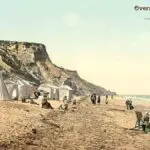
Or discover more locations in the England sitemap
About the author


Where did The Queen visit in 1976?
Where did the queen visit in 1979, where did the queen visit in 1973, where did the queen visit in 1988, where did the queen visit in 1981, where did the queen visit in 1983, where did the queen visit in 1977, where did the queen visit in 1974, where did the queen visit in 1970, where did the queen visit in 1986, where did the queen visit in 1996, where did the queen visit in 1963, where did the queen visit in 1967, what did the queen do in 1976, what did queen elizabeth do in 1976, where did the queen visit in 1958, where did the queen visit in 1957, where did the queen visit in 1959.
- ADS Main Website
Harrod, H. (1859). Queen Elizabeth Woodville's visit to Norwich in 1469; from the chamberlain's accounts for the ninth and tenth years of King Edward IV.. Norfolk Archaeology 05 . Vol 5(1), pp. 32-37. https://doi.org/10.5284/1077326. Cite this via datacite
General election latest: Farage holding 'emergency' news briefing - where he could announce he's standing at election
Nigel Farage is holding an "emergency" news conference from 4pm where he could announce he's standing at the general election. Watch live in the stream below.
Monday 3 June 2024 15:50, UK
- General Election 2024
Please use Chrome browser for a more accessible video player
Election news
- Farage holding news briefing - watch and follow live from 4pm
- Ex-Ukip leader could announce he's standing at election
- Starmer 'prepared to use nuclear weapons' if needed
- Tories pledge to protect 'biological sex' as characteristic
- Poll to reveal projected election winner at 5pm
- Be in the audience for our election leaders event
- Live reporting by Ben Bloch
Expert analysis
- Rob Powell: Tories put Labour on the spot over biological sex
- Adam Boulton: 'Starmtroopers' are purging Labour
Election essentials
- Trackers: Who's leading polls? | Is PM keeping promises?
- Follow Sky's politics podcasts: Electoral Dysfunction | Politics At Jack And Sam's
- Read more: Who is standing down? | Key seats to watch | How to register to vote | What counts as voter ID? | Check if your constituency is changing | Your essential guide to election lingo | Sky's election night plans
Nigel Farage is holding what he's billed as an "emergency" news briefing from 4pm.
Sources have suggested to Sky colleagues that he could announce he's standing for Reform UK in the general election.
It comes just two weeks after he said he wouldn't be.
We'll bring you live updates on what he says - and you can watch the event live in the stream above.
Campaign Q&As can often throw up some unexpected enquiries, especially when those doing the asking are younger in years.
And so it was during a Tory visit to Wantage Town Football Club, where curveballs weren't only limited to the pitch.
To start off with, Rishi Sunak was asked what his favourite Nando's meal was.
The answer – a half chicken with medium spice along with chips and broccoli, which the PM said he had eaten twice last week.
The broccoli caused much amazement among the footballers, with one saying he thought the visiting guest would have been more of a pea man.
"It's good broccoli," said Rishi Sunak - in what is surely the first time a prime minister has ever spoken those words at a media event – before adding he would also recommend the boneless thighs.
There was also the revelation that the prime minister had recently started getting into country music, with Tim McGraw a particular highlight.
But predictably for a Southampton FC, when asked what his favourite song was, he plumped for "when the Saints go marching in".
We're still waiting for YouGov's massive poll at 5pm .
But before that, we've had another big survey come in.
Redfield and Wilton Strategies asked 10,000 people between 31 May and 2 June how they plan to vote in the general election.
Here are the results, with the change from the previous survey in brackets:
- Labour 46% (–)
- Conservative 20% (-3)
- Reform 14% (+1)
- Lib Dem 10% (+1)
- Green 5% (–)
- SNP 2% (-1)
- Other 2% (-1)
In total, Labour has a lead of 26 points.
The Conservatives have dropped three points, while Reform UK gained one point and the Lib Dems gained one point.
The SNP lost a point, as did the "other" group.
Redfield and Wilton says it is the joint lowest score for the Tories with Rishi Sunak as prime minister.
Spotting and sorting awkward backdrops is an essential skill for any party campaign official.
That can be difficult though when the backdrop is water-based and moving.
Rishi Sunak found this out today when a group of Liberal Democrats photobombed his visit to the banks of the Thames by sailing a placard-laden boat into shot in full view of a pack of TV cameras.
The party has been driving home one of their key campaign messages in the area, on the filthy state of the UK's waterways.
Speaking to some rowers at the Henley club, you do wonder if water quality would have been a more tailored campaign message than the Tories' announcement around gender today.
As Rishi Sunak cleaned a boat, one woman said he didn't really need to do that as it hadn't been in the water recently - pointedly adding that if it had been in the water, it would be covered in "poo" because the Thames is so bad in the area.
Some of the rowers who met the prime minister also seemed in the dark about the gender policy announcement, saying they'd just been told it was a visit connected to women's sports.
Indeed, Rishi Sunak didn't chat to the female athletes about the planned changes to equality law – instead keeping the conversation on rowing.
But when asked, most of the athletes seemed broadly sympathetic to the changes – with some expressing concern about the potential advantage transgender women may have in physical sports like their own.
Rishi Sunak has been facing questions on his party's plan to overhaul the Equality Act and ensure "biological sex" is a protected characteristic.
Speaking from the Leander Club in Berkshire, he was asked whether his goal is to ensure no transgender woman can access female-only spaces.
The PM said there was a "lack of clarity in the law" that is "risking the safety of women and girls".
He said sex should mean biological sex, and that providers of single-sex spaces will be "able to protect women and girls and ensure their safety and security".
Mr Sunak hit out at the SNP's plan to make gender recognition on a self-ID basis, saying it "wasn't right".
But he denied the Tories were "stoking culture wars" on the issue.
"It builds on our track record of treating these issues sensitively and with compassion, as of course we should," he insisted.
But he said protecting women and girls was "paramount in all of our minds".
Reform UK's honorary president Nigel Farage has announced that he will be giving an "emergency" news conference at 4pm.
Sources have suggested to Sky colleagues that he could announce plans to stand as a candidate in this general election.
If he did make such an announcement, it would be a significant U-turn, having said less than two weeks ago that having "thought long and hard" about it, it was "not the right time".
Sunak: Only two people can be PM
Rishi Sunak was asked earlier about the possibility of Mr Farage standing, and he told broadcasters: "At the end of the day, on 5 July, one of two people will be prime minister: either Keir Starmer or me.
"A vote for anyone who's not a Conservative candidate is just a vote to put Keir Starmer in Number 10."
Veterans minister Johnny Mercer has just responded to Sir Keir Starmer's speech pitching Labour as the "party of defence".
He pointed to the party's previously leader and now independent candidate, Jeremy Corbyn, "who said we should turn the army into a peace corps".
"Keir Starmer supported him not once, but twice. So the idea that a leopard can change its spots in this way is obviously taking the British public for fools."
He also hit out at the Labour leader for not matching the Conservatives' commitment to raising defence spending to 2.5% of GDP by 2030, and instead saying they'll do it when economic conditions allow.
And on the nuclear deterrent, Mr Mercer noted that the shadow foreign secretary and deputy Labour leader voted against renewing Trident eight years ago.
"If you're serious about nuclear deterrent, if you're serious about defence, you're serious about veterans, I think voting for Labour is extremely dangerous."
The Scottish first minister has criticised Sir Keir Starmer's defence speech this morning, where Labour reaffirmed its commitment to the nuclear triple lock.
Speaking from a dairy farm in Stirling, John Swinney said the SNP believes there is not a place for a nuclear deterrent in our society.
The party has always opposed nuclear weapons, he said.
Nuclear deterrent 'never going to be used'
Mr Swinney said it was "not acceptable" to spend money on the Trident nuclear missile system while conventional defence forces were being "starved" of funding.
We are now living in a "dangerous world", he said, and conventional forces are there to defend us.
He argued Trident is a system "that's never going to be used".
Labour should "get their priorities right", he said, adding it should be investing in conventional weaponry, getting out of the Trident system and ending years of Conservative austerity.
It's lunchtime - here's what you need to know as the second full week of campaigning gets under way.
Sir Keir Starmer has been pitching his party as strong on national security, while Rishi Sunak is focusing on gender issues.
Let us get you up to speed on everything you may have missed today…
- Labour has been pitching itself as the "party of defence" as it hammers home the message that it has "changed" since the Jeremy Corbyn era;
- Sir Keir Starmer delivered a speech saying that "a new age of insecurity has begun", and that under Labour, "national security will always come first";
- He said he would be "prepared to use nuclear weapons" if needed to defend the UK;
- But he was put on the defensive when it was noted that a number of members of his shadow cabinet - including his shadow foreign secretary and deputy party leader - previously voted against renewing the Trident nuclear deterrent submarine programme;
- Our political correspondent Serena Barker-Singh said Labour "clearly have it in their mind that they don't want to go into this election - like they did in 2019 - with a wavering view on the nuclear deterrent";
- Sir Keir was also questioned on the war in Gaza, and he said, if elected, he would request fresh legal advice on Israel's compliance with international law to see if arms sales should be halted.
- The Conservative Party has announced plans to change the Equality Act to ensure "biological sex" is a protected characteristic;
- The aim is to make it "simpler for service providers for women and girls, such as those running sessions for domestic abuse victims, to prevent biological males from taking part";
- Speaking to Sky News, cabinet minister Kemi Badenoch was put on the spot about why the government had not already done that, and she said the "biggest reason" was the SNP's controversial gender recognition legislation that "took up quite a lot of bandwidth"
- Our political correspondent Rob Powell said the party is "targeting the traditional Tory core vote", as well as trying to "stop leakage to Reform".
- The Liberal Democrats have been out and about promoting their pledge to expand marine protected areas and bring in a new Blue Flag status for rivers, which would set legally binding targets to prevent sewage dumping in those sites;
- SNP leader John Swinney has been out on the campaign trail meeting voters and getting his party's message out;
- Reform UK have also been campaigning - and Nigel Farage has announced an "emergency" news conference for 4pm. Follow Sky News for the latest.
And set your alarms for 5pm when Sky News will be publishing the first YouGov poll-based projection of the campaign.
It will be a seat-by-seat poll, so we'll bring you YouGov's projected election winner and the size of the majority - plus the names of any big beasts set to lose their seats.
Here are a couple of other stories that may interest you:
Our essential political podcast, Politics At Jack And Sam's , is going out every week day through the election campaign to bring a short burst of everything you need to know about the day ahead as this election unfolds - here is today's edition .
Tap here to follow Politics At Jack At Sam's wherever you get your podcasts .
Stick with us for all the latest throughout the afternoon.
Liberal Democrat deputy leader Daisy Cooper is on the campaign trail in Henley-on-Thames, an area that she says has been affected by raw sewage dumping.
She says it is an "environmental catastrophe" that has been damaging wildlife as well as affecting the popular Henley Royal Regatta.
"When people pull up their boats here, they have to wash them down," she tells a crowd of supporters.
Ms Cooper says her party has a plan to tackle the crisis and will "put an end" to raw sewage dumping.
She adds that people are "sick of this Conservative government".
Be the first to get Breaking News
Install the Sky News app for free


IMAGES
VIDEO
COMMENTS
Her visits to the county are always memorable events. The Queen raises her hand to wave at the waiting crowds and, as our photographer captured the moment, it seemed she was smiling just for us. This was a glorious sunny day to remember for those in the Norwich crowd in 1961. Schoolchildren lined the way and cameras snapped as she swept by in ...
The Queen visits Norfolk. Published 24 July 2023. Read about Her Majesty's two visits in Norfolk today - exploring beloved author Anna Sewell's House and hearing more about jeweller Monica Vinader's sustainability practices. This afternoon, The Queen was welcomed to Anna Sewell House, the birthplace of the beloved author of 'Black Beauty'.
An historic visit Norwich Castle was the Queen's first stop this morning. While she toured the 12th century castle, the Duke of Edinburgh opened the Norfolk Nelson Museum.
The Queen and The Duke of Edinburgh attend a Service in Norwich Cathedral and meet local people during a day of regional engagements.
The Queen will make her first official visit to Norwich in almost eight years when she officially opens Norwich Cathedral's Hostry visitor centre and the refectory in May. She will be accompanied by her husband the Duke of Edinburgh for the visit on May 4, which will include a service at the cathedral, visits to the new buildings and the ...
At County Hall, the band of the 1st Battalion The Royal Anglian Regiment marches up the steps and waits. At Norwich Airport, HRH Prince Philip arrives first, having travelled from Yorkshire. He is greeted by the welcoming party before the Queen's plane taxis in. She is greeted by Sir Edmund Bacon, the Lord Lieutenant of Norfolk.
In about June 1578, Norwich received the news that their popular monarch, Queen Elizabeth I was to visit, as part of one of her 'Progresses'. The city had just 2 months to prepare. The Progresses were a big deal. Part pageant, part PR exercise, part royal duty, on her 'Progresses' Elizabeth would process through the towns of certain ...
HM The Queen's Cathedral visits. 13 Sept 2022 Norwich Cathedral welcomed Her late Majesty The Queen three times during her reign. Most recently The Queen and The Duke of Edinburgh visited in May 2010 to officially open the Cathedral's new Refectory and Hostry. Her Majesty also visited the Cathedral on Maundy Thursday in April 1996 as part of ...
The Queen and The Duke of Edinburgh visit North East England as part of Her Majesty's tour of the UK in her Silver Jubilee year.
The guides will present an illustrated talk and map, showing Queen Elizabeth I's progress through the City during her visit in 1578. If there is time, the day will continue at the Bridewell Museum ...
The Queen Mother died 20 years ago on March 30, 2002 at the age of 101, so today we are celebrating her memory by looking back at some of her many trips to visit Norfolk . The Queen Mother during ...
Well, the answer is yes! In 1977, as part of her Silver Jubilee Celebrations, Queen Elizabeth II made a visit to Norwich. This visit was particularly special as it included a dance display that involved 3,000 school children from 83 schools. The Queen's visit brought much joy and excitement to the people of Norwich, and it was a memorable ...
King's Lynn, close to Sandringham, has particularly strong Royal connections. Princess Victoria visited the town in 1835, two years before she became Queen. Crowds of well-wishers mobbed her, and today the townsfolk are just as pleased to see Britain's reigning monarch. On the day of her golden jubilee back in 2002, the Queen came to King ...
The Queen visits the Fiji Exhibition in Norwich. Published 27 January 2017. Her Majesty The Queen visits the 'Fiji: Art & Life in the Pacific' exhibition at the Sainsbury Centre for Visual Arts, University of East Anglia. 'Fiji: Art & Life in the Pacific' is the largest and most comprehensive exhibition about Fiji ever assembled in the UK ...
The Queen visited the new scanning suite before unveiling a plaque and signing a photograph which will be put in the MRI unit. It was her first visit to the hospital since 2008.
It was against this fraught backdrop that Elizabeth progressed to East Anglia in the summer of 1578. Between 31 July and 30 August 1578, Elizabeth and her court visited various towns and noblemen's estates across Norfolk and Suffolk. 46 Much of the latter part of the tour was spent in Norwich, and two commemorative accounts of the Queen's visit were published soon after: Bernard Garter's ...
Tue 29 Jan 2002 11.50 EST. The Queen's golden jubilee itinerary. May 1: The Queen, accompanied by the Duke of Edinburgh, will first visit the south-west of England. They will both begin their tour ...
In 1925, HRH Prince Henry laid the foundation stone of the new children's block of the Norfolk and Norwich Hospital. Prince Henry. Born: 31 March 1900, York Cottage. Died: 10 June 1974, Barnwell Manor, Barnwell. Spouse: Princess Alice, Duchess of Gloucester (m. 1935-1974)
The Queen has won many fans during her reign of more than 60 years. We're grateful to readers for sharing their memories of the monarch, and stories about her visits to East Anglia
Norfolk is set to welcome a royal visitor next month. Princess Anne is expected to visit the county on July 18 as she visits Norwich and Brancaster. According to the Royal Family diary she will be attending Brancaster coastwatch station before travelling to Citizens Advice Norwich later in the day. For security reasons, the Royal Family does ...
The Queen visits Norwich. Where did The Queen visit in 1976? On July 6-11 of 1976, Queen Elizabeth II visited the United States, at the time under the presidency of Gerald Ford, as part of her Bicentennial visits to former colonies of Britain. While in the U.S., the Queen toured Philadelphia, Washington, New York City, New Haven ...
Harrod, H. (1859). Queen Elizabeth Woodville's visit to Norwich in 1469; from the chamberlain's accounts for the ninth and tenth years of King Edward IV..
Rishi Sunak attacks Labour's plan to deliver clean power by 2030. We're due to hear from Sir Keir Starmer in Scotland this morning.